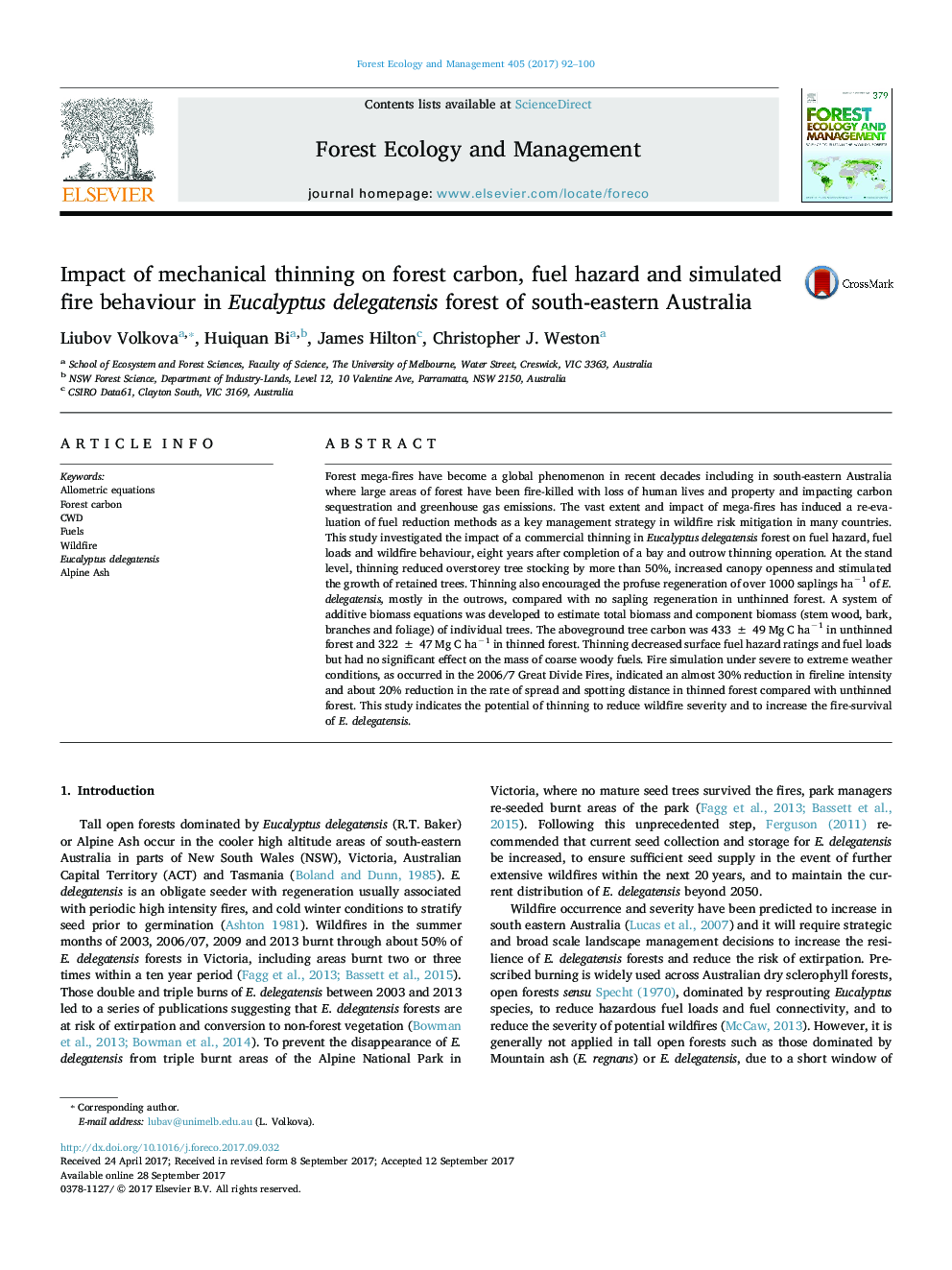| کد مقاله | کد نشریه | سال انتشار | مقاله انگلیسی | نسخه تمام متن |
|---|---|---|---|---|
| 6459056 | 1421353 | 2017 | 9 صفحه PDF | دانلود رایگان |
- Aboveground carbon storage of E. delegatensis forest is described.
- Silvicultural thinning can increase the fire-resilience of E. delegatensis.
- Thinning can reduce wildfire severity and rate of spread.
Forest mega-fires have become a global phenomenon in recent decades including in south-eastern Australia where large areas of forest have been fire-killed with loss of human lives and property and impacting carbon sequestration and greenhouse gas emissions. The vast extent and impact of mega-fires has induced a re-evaluation of fuel reduction methods as a key management strategy in wildfire risk mitigation in many countries. This study investigated the impact of a commercial thinning in Eucalyptus delegatensis forest on fuel hazard, fuel loads and wildfire behaviour, eight years after completion of a bay and outrow thinning operation. At the stand level, thinning reduced overstorey tree stocking by more than 50%, increased canopy openness and stimulated the growth of retained trees. Thinning also encouraged the profuse regeneration of over 1000 saplings haâ1 of E. delegatensis, mostly in the outrows, compared with no sapling regeneration in unthinned forest. A system of additive biomass equations was developed to estimate total biomass and component biomass (stem wood, bark, branches and foliage) of individual trees. The aboveground tree carbon was 433 ± 49 Mg C haâ1 in unthinned forest and 322 ± 47 Mg C haâ1 in thinned forest. Thinning decreased surface fuel hazard ratings and fuel loads but had no significant effect on the mass of coarse woody fuels. Fire simulation under severe to extreme weather conditions, as occurred in the 2006/7 Great Divide Fires, indicated an almost 30% reduction in fireline intensity and about 20% reduction in the rate of spread and spotting distance in thinned forest compared with unthinned forest. This study indicates the potential of thinning to reduce wildfire severity and to increase the fire-survival of E. delegatensis.
Journal: Forest Ecology and Management - Volume 405, 1 December 2017, Pages 92-100
